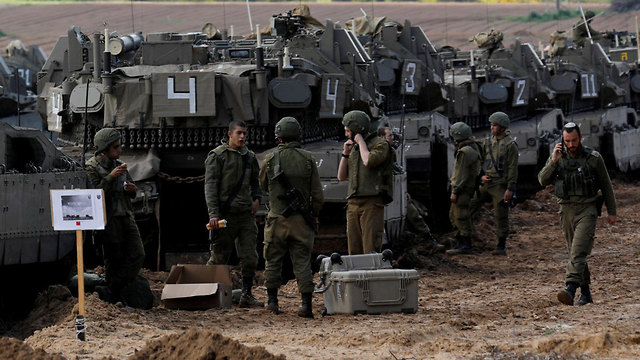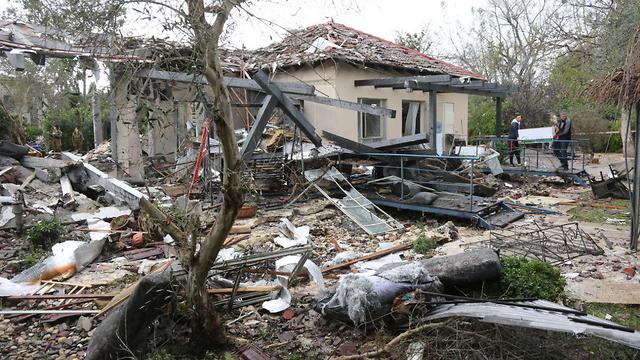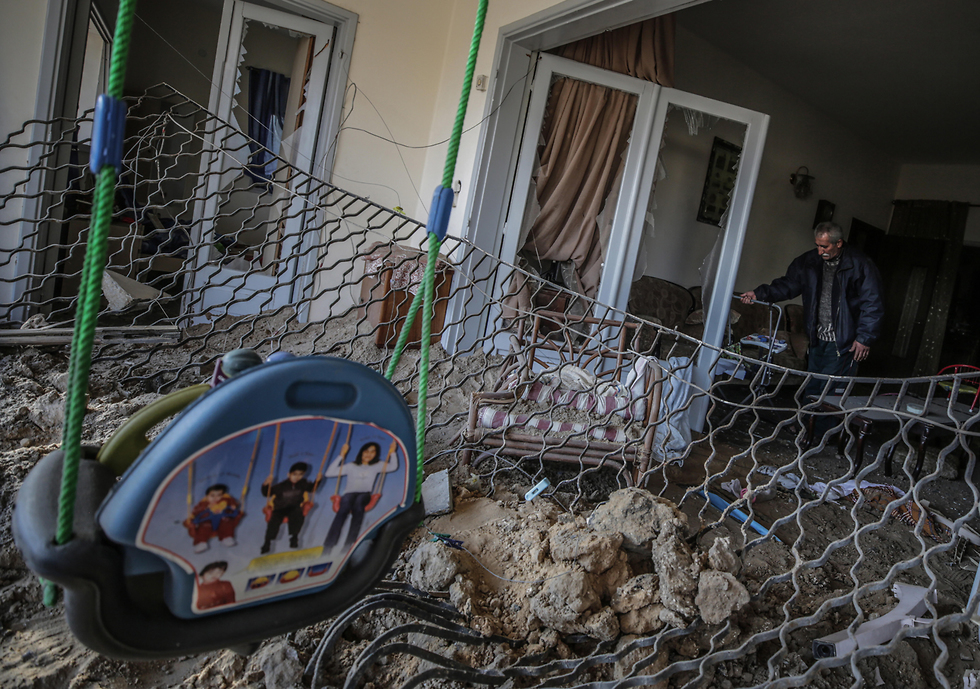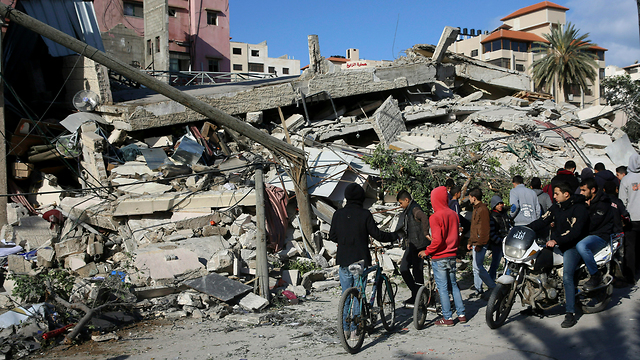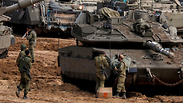
The IDF is no longer playing by Hamas' rules
Analysis: Israel is ditching its year-long policy of meeting quiet with quiet in Gaza, and the terror group that rules the Strip is beginning to realize that this time it has gone too far and will pay a heavy price
The events of Monday night revealed a significant shift in the pattern of the IDF's response to rocket fire from Gaza. Despite Hamas' claims of ceasefires, the army continued to hit targets inside the Strip, putting an end to the equation used since March of last year that "quiet will be met with quiet."
This is no longer valid, for it appears that the IDF has a new strategy: Attrition will be met with attrition, escalation will be met with escalation.
Hamas decided in advance not to engage in heavy exchanges of fire with the IDF when it retaliated to the rocket attack on Moshav Mishmeret.
The terror group realized that an attack on seven people in the heart of Israel - even if no civilians were killed - was a bridge too far, and reined in its return fire.
The decision to stick to attacks on the Gaza border area shows that Hamas and Islamic Jihad came to the conclusion that Israel would respond very differently to a devastating attack on the central Dan region that it would to a similar attack on a Gaza border community.
Hamas misread the situation
Indeed, when the Israeli attacks began, short-range barrages of rockets - mostly Qassams - were fired at Sderot and other communities in the Gaza area, as well as at Netivot and Ofakim.
Hamas thought that by limiting its response, it would - as with previous rounds of fighting - be able to turn to Egypt for a ceasefire, and that Israel, even if it did not explicitly say so, would follow the "quiet will be met with quiet" formula. This did not happen.
The terror group on Monday night announced to the media and across the social networks that it had reached an agreement with the Egyptians for a ceasefire that would begin at 22:00, but it had again failed to read the situation correctly.
Israel for the first time in a year refused to play the game, and IDF aircraft - as well as tanks and naval ships - continued to hit targets within the Strip even after the Hamas-declared cease-fire went into effect.
Hamas then tried to again return to the formula of quiet for quiet and at 3am halted fire. BY that point it had only fired about 60 rockets at Israel, a relatively small number compared to previous rounds. And even though Hamas had stopped firing, the IDF attacked again three hours later.
Hamas could see that the IDF's pattern had changed, and despite the 6am strikes, it has since refrained from launching any rockets at all.
A lesson for Hamas
As part of this new modus operandi, the IDF is in no hurry. It is attacking targets slowly and systematically in the Gaza Strip with two main goals in mind: hurting Hamas' military capabilities and infrastructure, and striking into the group's a consciousness that Israel will not hesitate to harm its regime and its political power bases.
The message is that if Hamas escalates the provocations against Israel, it will endanger the survival of its regime in the Gaza Strip - not only because of what the IDF will do to it with the assistance of the Shin Bet security service, but also because the population of the Gaza Strip will understand that Hamas is not achieving it.
The IDF bombing last night damaged military installations belonging to both Hamas intelligence and naval forces. This was followed by attacks on two dual-use buildings in Gaza City - both symbols of power used by Hamas's internal security forces and intelligence services.
The strikes on these buildings, which every Gaza resident recognized as symbols of the Hamas government – first and foremost the office building where Ismail Haniyeh's office was located - was a clear act of dominance. And that was not the end of the story.
It is not yet clear long Israel will persist with this new pattern of slow-burning attrition and readiness to launch a large-scale operation if Hamas escalates its rocket and mortar fire. That is up to the prime minister and his security advisors.
Nonetheless, the preparations made by the IDF in the past two days, in particular the decision to deploy the Golani Brigade and two tank divisions to the Gaza border, as well as the mobilization of reservists from air defense and intelligence units, indicate that the IDF is ready and prepared for a round of fighting that that will last several days, including the possible entrance of ground troops into Gaza.
The mere deployment of these forces and the mobilization of reservists - which comes with a steep bill - is another signal to Hamas and Islamic Jihad that the IDF is prepared to go far this time. But again it is up to the politicians to decide what happens next. In the meantime, there are certainly signals and messages coming from Hamas, and the mediators are busy trying to restore calm.










